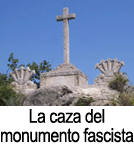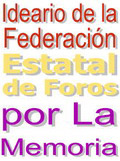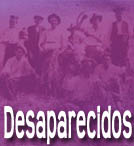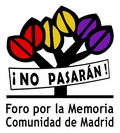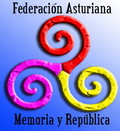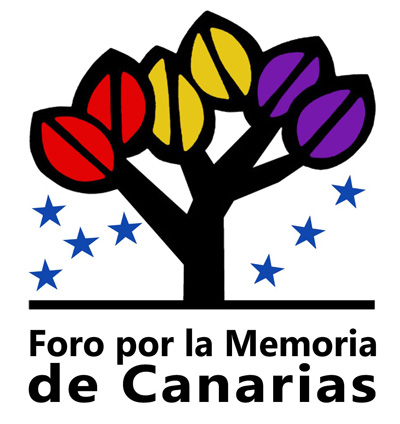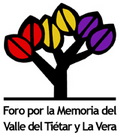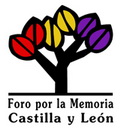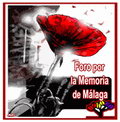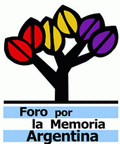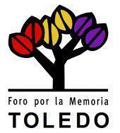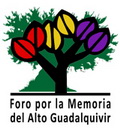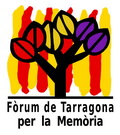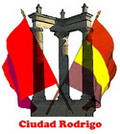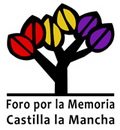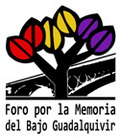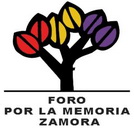Franco’s Crypt: Spanish and Culture and Memory since 1936 – review
 Jeremy Treglown has written an elegant but deeply flawed book about the fraught battles over Spain’s dark past
Jeremy Treglown has written an elegant but deeply flawed book about the fraught battles over Spain’s dark past
Helen Graham
The Guardian, Friday 21 March 2014 09.15 GMT
The Franco’s crypt of Jeremy Treglown’s title is Spain’s Valley of the Fallen: a huge basilica-mausoleum, topped by a gigantic cross, which rises out of the mountain range outside Madrid. It was built by forced labour on the dictator’s orders, to commemorate his Hitler and Mussolini-backed victory in the civil war of 1936-39. Although hostilities had ended in early 1939, Franco continued to wage war against the defeated Republicans, the «enemy within». Labelling them all «red» (despite their social, political and religious diversity), Franco executed and imprisoned Republicans en masse in the years up to 1945, when he faced the defeat of his allies, whose vision of a politically and socially «purified» nation he fervently shared.
Franco’s prisons would long outlast Hitler’s: all over Spain, penal labour detachments built roads, reservoirs and other infrastructure into the 1960s. By the time Franco’s crypt was finished in 1959, however, the western world was morphing into everything the dictator and his supporters abhorred. The spread of social democracy, civil rights and an increasingly plural public sphere challenged the rigid social hierarchies and patrician truths they sought to reimpose in Spain. But Franco was a survivor: he distanced himself cosmetically from his defeated totalitarian allies and accepted, as the distasteful price of survival, Spain’s integration into the expanding western consumerist order. When Franco was finally buried in his crypt in 1975, his regime had lasted nearly 40 years.
Those decades witnessed huge economic and social shifts but without corresponding change in the fundamental politics of the dictatorship and its many small-town supporters. This abiding disjuncture provides the key not only to the strange and surreal mix that Francoism became under Franco, but also what it has become since: for many of its political attitudes, institutional assumptions and mental tics are still to be found in the public sphere today.
In view of this complex terrain, I expected much of a book whose sub‑title promises an analysis of «Spanish culture and memory since 1936». But what the reader gets instead is really a compendium of freestanding reviews, in which Treglown summarises individual films, novels and occasionally art produced in Spain under the dictatorship and since. He writes elegantly and often perceptively. But there is a deep problem with his method: he presents his comments as if delivering an authoritative dispatch on the culture and collective memory of an entire population, yet he tells us nothing about who, and how many, read the books or saw the (often art‑house) films he reviews, nor about their response. This is a flaw, especially in a book whose explanatory pivot is 1960s Spain – the decade of vertiginous social change, which generated an even greater range of «disjunctive» social worlds. Alongside the international tourism on the costas and the urban consumerism of the new managerial classes, racking poverty and rapid industrialisation accelerated the migration and emigration of the rural poor. Surveillance and terror were still pervasive, and indeed far more pervasively degrading than Treglown perceives – their function in the 1960s being to repress dissidence and thereby permanently to disable civil society.
Any book about postwar culture in Spain has at least to try to ascertain what emerged from this social vortex: how did the increasingly diverse groups of Spaniards make sense of living through it? What did it mean for their understanding of their own wartime pasts, present circumstances and possible futures? How has all of it contributed to the forging of memories of the past and the understanding of present-day politics in Spain? Instead, Treglown discusses something more limited and more familiar: how, in the 1960s, the elite cultural sphere expanded to cater for the newly emergent professional classes, who, while broadly accepting of the dictatorship, nevertheless wanted an environment that could cautiously reflect their sense of their own sophistication, of having «arrived». This meant some relaxation of censorship, as Treglown acknowledges. In time, its cultural effects also had a subtle, if secondary, effect on regime change in the 1970s. But Treglown is wrong to read into this a thoroughgoing cultural liberalisation in the 1960s. It was all very well for Franco to shopfront some «safe» abstract art, or indeed to hire upmarket US PR firms to assist in image manipulation for the benefit of foreigners (tourism and trade). But the strict limits of Francoist tolerance remained clear and were viciously drawn. As soon as any «subversive» cultural artefact acquired potential mass-market appeal, editions were pulped and publishers prosecuted, and not infrequently bankrupted in the process. Attempts by film-makers to make documentaries with shantytown-dwelling migrants at the sharp end of the «economic miracle» had to be done clandestinely. In ordinary Spain, beyond the literary salon, torture remained an everyday reality in the police stations and there were executions until October 1975. It is as if, for Treglown, the expansion of art galleries and literary life somehow mitigates the regime’s crimes against ordinary people. But in this book ordinary people get little more than occasional walk-on appearances, even in the matter of Spain’s current memory wars.
While Franco’s crypt furnishes Treglown with a title, the memory wars it symbolises are largely ignored. He touches briefly on the Spanish civic movement that continues to excavate the mass graves of those extrajudicially killed by Francoist forces. Treglown manages to sound both weary and irritated about it at the same time: it is all so pointless and démodé; it was a long time ago, there was a civil war in which civilians were extrajudicially murdered on both sides, why all the fuss now about those on this side? But that is to miss the point. Treglown complains that activists have «politicised» the issue, but it was already and always politicised: he ignores the way in which Franco kept the war «forever yesterday» for 40 years by endlessly invoking his own special category of the dead, the «martyrs» murdered in Republican territory during the war. Their bodies were exhumed in the 1940s, given ceremonial reburial and perpetually celebrated, while the bodies of those murdered by Franco’s own forces remained wherever they had fallen: in roadside ditches or unmarked common graves, endlessly labelled scum, the unclean, the anti-nation – two classes of Spaniard, two classes of descendant.
What takes more explaining is why this manichean ideology wasn’t buried along with the dictator in his crypt in 1975. Regime change occurred, but with an extraordinary degree of institutional continuity. Democratisation was overseen by a pro-Franco army that ensured the crypt held on to its secrets. Even the «failed» military coup of 1981 ushered in an extended era of judicial Francoism, where judges trained under the dictatorship and still on the bench have repeatedly blocked attempts to put evidence of the regime’s crimes into the public domain. Ever since, it has been an uphill struggle against officialdom for people in Spain trying to retrieve the remains of disappeared family members who are always the «recent dead», however long ago they died. This is a story still confined to the outer margins of Spain’s mass media – since the notorious non-screening of a number of high-profile, prize-winning documentaries about the disappeared has come to look very much like old-style censorship by other means.
Treglown’s response to all this is to exclaim that it isn’t so: «How dare anyone talk about an amnesia deal?» Aside from this being a curious way to address people searching for disappeared family members after 40 years of a democracy that hasn’t given them answers, Treglown has managed to miss the point again. He thinks that because these themes now appear in highbrow literature and arthouse films, the matter is settled. But he is mistaking the literary salon for the public sphere – forgivable, almost, in the 19th century but not in the 21st. The political heirs of Franco haven’t made the same mistake, of course: canny, like their predecessors, they know the difference between prime‑time television and an elite cultural sphere – which is all the more relevant in Spain, where the Franco era reinforced an already deep divide between elite and popular culture.
The importance of the mass graves initiative in Spain goes far beyond righting a specific historical wrong, for it offers the constitutional state a means of identifying and naming all its citizens – past and present – as an act of democratic inclusion and a reminder that in democracy no section of a citizenry can be «expendable» in this way, nor should one segment be mobilised against another. As the government withdraws even the minimal public money previously available, the excavations in Spain have now become completely dependent on civic action and volunteer donations. This points to a democratic deficit at the heart of the state, but it also shows there is still a functioning civil society and democratic social fabric, in spite of governmental attempts to erode citizens’ rights.
So what was the point of Franco’s crypt? Historically, it symbolises a failed attempt to impose, in perpetuity, one claustrophobic reading of a national past. For Treglown himself, it is also a Pandora’s box, signifying his own unease over the uncontrollability of meaning once a difficult past is no longer under lock and key.
And the point of Franco’s Crypt? It is two books – though neither, disappointingly, has much to say about how Francoism shaped «Spanish culture», diverse as it is, beyond the elite. The first book is the compendium of synopses topped and tailed by brief political and literary travelogue. But the second, a sublimi
nal and indeed cryptic subtext to the book, is in fact more dark than disappointing. It is a rather antiquarian refurbishment of Francoism, done in patrician British style. What are we to make of this, in an age where populist conservative nationalisms are on the rise, including in Spain, where the political establishment, looking to the dictatorship for serviceable nationalist myths, still clings to its hierarchy of the dead?
• Helen Graham’s most recent book is The War and Its Shadow: Spain’s Civil War in Europe’s Long Twentieth Century is published by Sussex Academic Press.








